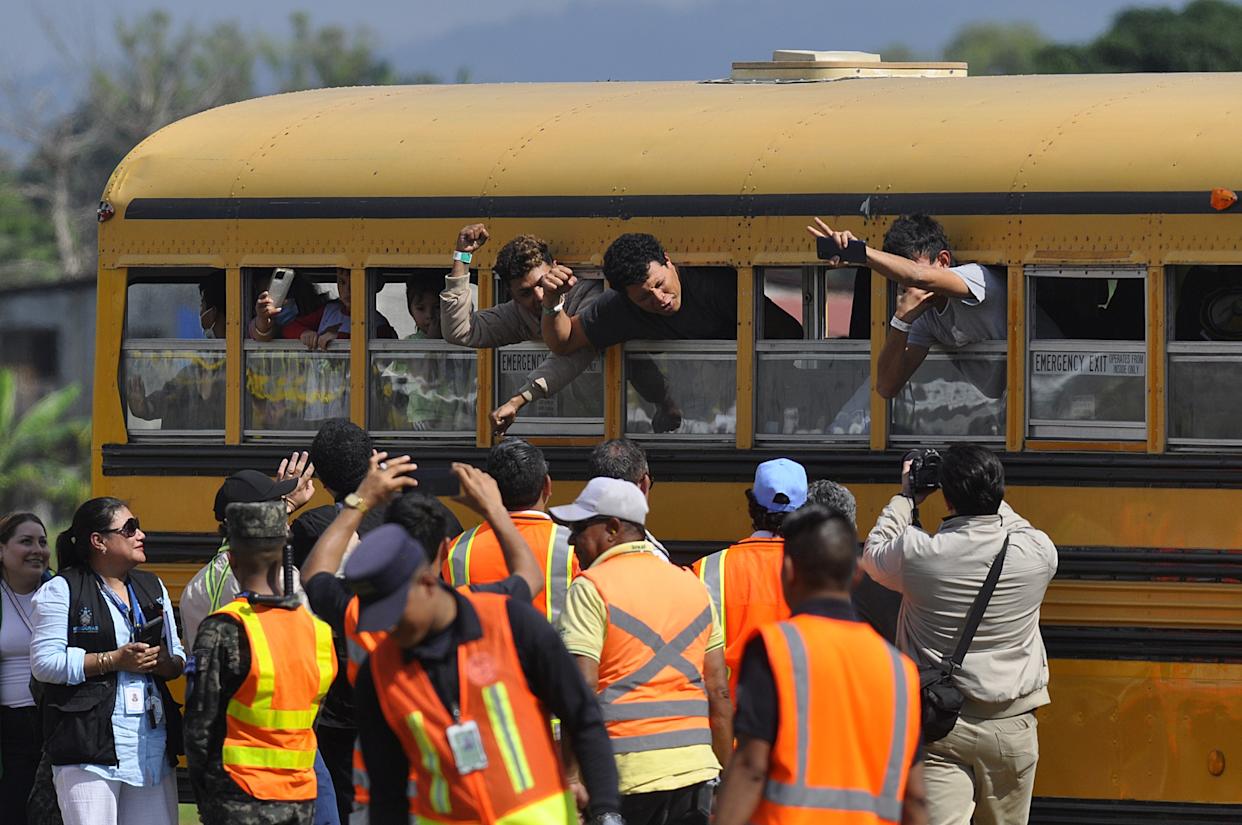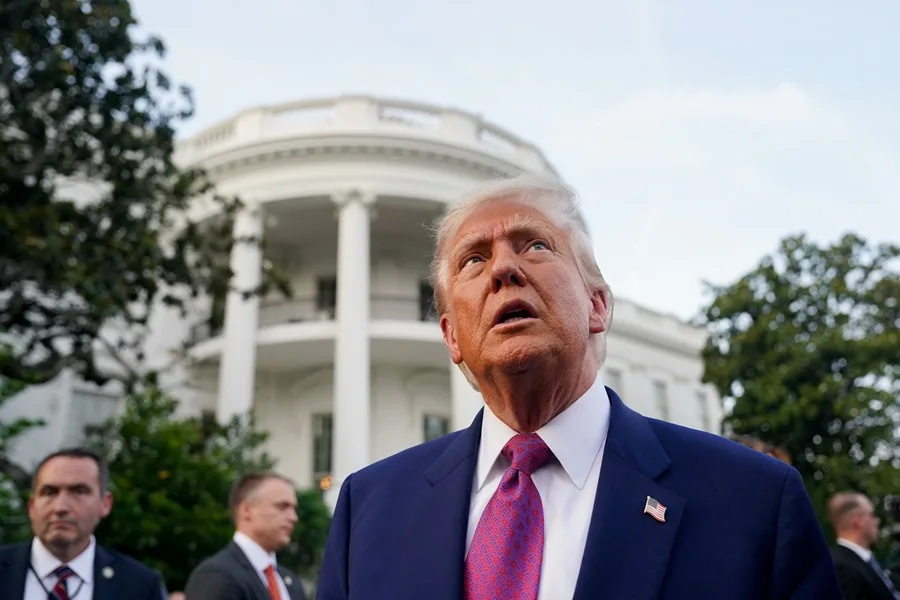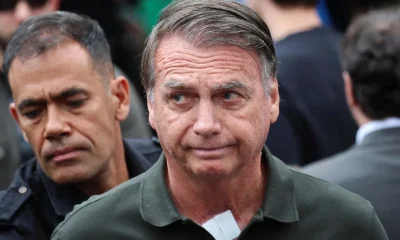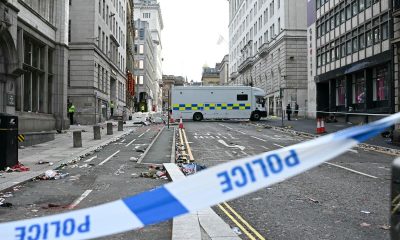International
80 years since the attack on Hitler that killed Count Claus Schenk von Staufenberg

A day like this Saturday, a bomb placed by Count Claus Schenk von Stauffenberg exploded in the headquarters of the ‘Führer’ Adolf Hitler in Rastenburg – today Ketrzyn, in Poland – to kill the Nazi dictator who, however, was only slightly injured and would soon trigger his repression against the conspirators.
Von Stauffenberg’s bomb was part of the ‘Valkiria Plan’, an attempted coup d’état conceived between 1943 and 1944 within the Wehrmacht as a desperate response to the unfavorable evolution of the war in Europe.
Shortly before, on June 6, the landing in Normandy had taken place, the allied military operation that would end up being crucial in the defeat of the Third Reich.
Among those responsible for that frustrated attempt to kill the tyrant were retired general Ludwig Beck, division general Henning von Tresckow, colonel general Friedrich Olbricht and other high-ranking officers, although von Stauffenberg was the one who was personally responsible for carrying out his attack on Hitler.
Von Stauffenberg, after being promoted to colonel and relocated as Chief of Staff of the Reserve Army Command, gained such a position in the high instances of the Third Reich that participated in meetings attended by Hitler.
Von Stauffenberg failed in the same way as his conspiratorial comrades, who had to rise up against the regime in Berlin.
That attempt cost them their lives, because the history books show that between 180 and 200 people were executed by the Third Reich, shot, hanged or even strangled, after the failed bomb of Von Stauffenberg.
Von Stauffenberg himself, and three other officers were shot without trial in the courtyard of the building that today houses the Ministry of Defense in Berlin.
Hitler did not die in the explosion of his Rastenburg headquarters, but took his life in his Berlin bunker on April 30, 1945, with Germany – and much of Europe – destroyed, and his regime having committed the systematic murder of six million European Jews on the blackest page in the history of the Old Continent.
On the occasion of the 80th anniversary of the attack, which happens to be the greatest act of military resistance against Hitler during the Third Reich, the Center for Military History and Social Sciences (ZMSB) in Potsdam (east) recalls through a new digital dossier a historical moment that could have given an unexpected turn to history.
In addition to a compilation of historical documents and analyses, the experts consulted by the ZMSB of Potsdam reflect on how the historical evolution of the perception of those facts has been.
Thus, in the early 1950s, the West Germans saw the heroism of Von Stauffenberg and company with some distance.
In 1951, one in three Germans did not link the date of July 20 “to any event or had no opinion,” “another third saw it with critical eyes” and the other 33% saw the attempted murder against the Führer well, according to John Zimmermann, a member of the team of investigators who has prepared the ZMSB dossier.
“The peak of this negative feeling was reached in 1952: 28% thought that Germany would be better if there had been no resistance, and 39% even believed that they could have won the war without it,” added this researcher.
If Von Stauffenberg finally ended up enjoying the status of “hero in public opinion” this is due to the “political history” of Germany, whose authorities, in particular of the administration and the academic world, have turned July 20 into a date with which to remember a man who could have dealt a mortal blow to the Third Reich before time, according to Zimmermann.
International
Meta Says Russia Seeks to Ban WhatsApp for Defending Secure Communication

U.S. tech giant Meta, the parent company of WhatsApp, said that Russia is seeking to ban the messaging app because it “challenges government attempts to violate people’s right to secure communication.”
Russian authorities have encouraged citizens to switch to state-backed applications, and in August they already blocked WhatsApp’s calling feature.
On Friday, the communications regulator Roskomnadzor claimed that the platform was being used to “organize and carry out terrorist acts in the country, recruit perpetrators, and facilitate fraud and other crimes.”
“If the messaging service does not comply with Russian law, it will be completely blocked,” the regulator warned.
WhatsApp remains one of Russia’s most widely used messaging services, alongside Telegram.
Moscow is pressuring both platforms to grant authorities access to user data upon request for investigations into fraud and activities the government labels as “terrorist.”
Human rights advocates fear the demand could be used to target critics of the Kremlin, President Vladimir Putin, or the war in Ukraine.
International
Archbishop Wenski criticizes Trump’s deportation policies, calls for stronger push for reform

The Archbishop of Miami, Thomas Wenski, has called for increased pressure on the U.S. Congress to advance comprehensive immigration reform and criticized President Donald Trump’s mass deportation policies, arguing that they “do nothing to help.”
“We need to apply more pressure on Congress so lawmakers can make the necessary changes. It is also important for the Administration to listen to our voice. We do not want to be anyone’s enemy—we are Americans,” Wenski said in an interview with EFE.
The religious leader, who heads one of the dioceses with the largest Latino and Haitian populations in the United States, issued a call to defend the rights of migrants. He also emphasized that the U.S. Conference of Catholic Bishops (USCCB) has maintained a strong and public stance in favor of migrants for decades.
International
Trump relaunches diplomatic push to finalize U.S.-Backed peace plan for Ukraine War

U.S. President Donald Trump announced on Tuesday that his diplomatic team will resume meetings with delegations from Russia and Ukraine in an effort to pressure both sides to accept the peace plan proposed by Washington to end the war in Ukraine.
As part of this new round of talks, U.S. Special Envoy Steve Witkoff will travel to Moscow to meet with Russian President Vladimir Putin. Meanwhile, Army Secretary Dan Driscoll will hold discussions with Ukrainian representatives to narrow differences on the remaining points of the agreement.
Trump also confirmed his intention to meet personally with Ukrainian President Volodymyr Zelensky and with Putin, though he emphasized that such meetings will only take place “when the agreement is fully finalized or in its final stage.”
The president claimed that his administration has made “tremendous progress” toward resolving the conflict and reiterated that the war “never would have started” if he had been in the White House at the onset of the crisis.
The U.S.-backed peace plan consists of 28 points and has been revised following feedback from both sides. According to Trump, only “a few points of disagreement” remain under active discussion.
One of the most controversial aspects of the proposal is the suggestion that Ukraine cede parts of the Donbas region to Russia and limit the size of its armed forces. Kyiv is working closely with Washington to soften these clauses in search of an arrangement that does not compromise its sovereignty or security.
With this diplomatic push, Trump aims to solidify his role as the main mediator in the conflict and steer the war toward a political resolution after years of devastation, humanitarian crisis, and rising global geopolitical tensions.
-

 International4 days ago
International4 days agoTrump relaunches diplomatic push to finalize U.S.-Backed peace plan for Ukraine War
-

 International4 days ago
International4 days agoBolsonaro misses appeal deadline, faces imminent prison order by Brazil’s Supreme Court
-

 International4 days ago
International4 days agoMan pleads not guilty in Liverpool parade incident that injured more than 130
-

 Central America3 days ago
Central America3 days agoPanama reinforces security with new helicopters and Super Tucano Aircraft purchases
-

 International4 days ago
International4 days agoMacron to announce new voluntary military service amid rising security concerns in Europe
-

 Central America3 days ago
Central America3 days agoTrump urges hondurans to back conservative candidate Nasry Asfura in november elections
-

 Central America21 hours ago
Central America21 hours agoTrump Pardons Former Honduran President Hernández and Warns of Aid Cuts Ahead of Election
-

 International3 days ago
International3 days agoArchbishop Wenski criticizes Trump’s deportation policies, calls for stronger push for reform
-

 Central America3 days ago
Central America3 days agoWashington calls for oversight as Honduras faces allegations of electoral interference
-

 International21 hours ago
International21 hours agoMeta Says Russia Seeks to Ban WhatsApp for Defending Secure Communication






























